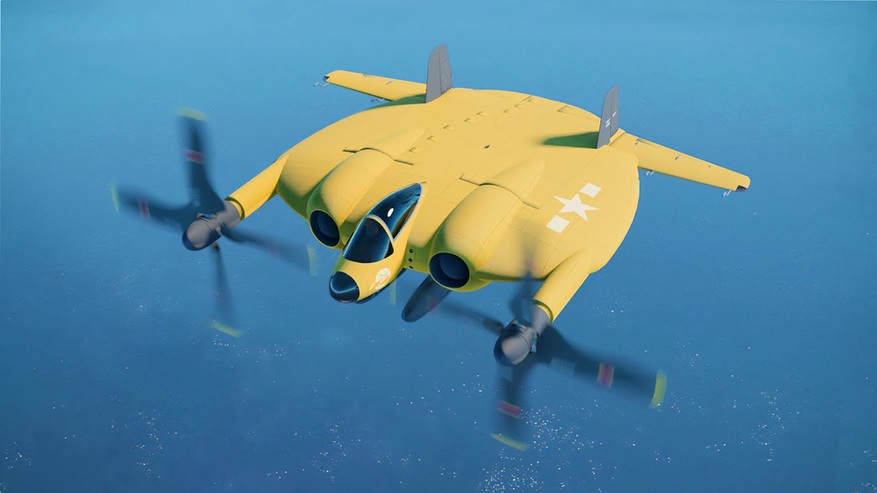
It became known why the USA created the world’s slowest XF5U plane
In the 1930s, the American designer Charles Zimmerman became interested in the concept of a ‘discoid’ aircraft. The result of this fascination was the Vought V-173 aircraft, which was nicknamed the ‘Flying Pancake’. Thanks to the unusual design, the aircraft designed by Zimmerman could not only take off vertically, but also move in space at ultra-low speeds, as well as hover in the air.
It is worth noting that the first model of the ‘Flying Pancake’ was the V-162. It was designed by a designer in 1933 under the auspices of NACA (formerly NASA). The exotic concept did not gain wide support. As a result, NACA management refused Zimmerman to allocate funding for the creation of a full-fledged aircraft.

In 1937, Chance Vought became interested in the Flying Pancake project. Its top management managed to convince the command of the US Navy of its viability. This became possible due to the fact that the Navy needed an aircraft capable of taking off from a runway no longer than 60 m.
The first flight of the V-173 prototype, made of wood and tarpaulin, took place in the fall of 1942. It received two Continental power plants with a total capacity of 160 hp. The power of the engines was not enough for air suspension. At the same time, the prototype was easily lifted into the air from a place, and also landed on a 15-meter runway. Its maximum speed was 222 km/h.

The development of a full-fledged aircraft began in 1943. The Vought XF5U model was five times larger than the prototype. It was equipped with two Pratt & Whitney power plants with a capacity of 2700 hp. This was enough to accelerate to 765 km/h. Moreover, due to the high power of the ‘engines’, the XF5U could move through the air at a speed of 32 km/h. It was recognized as the slowest plane on the planet.
Chance Vought is having problems purchasing components. As a result, the development of the world’s slowest carrier-based fighter was delayed. In the early spring of 1947, the Navy command closed the project because the aircraft could not compete with the new Phantom jets.

